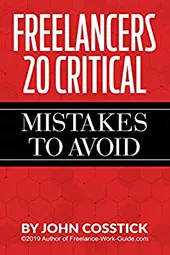What is a Thought Leadership?
Peter Drucker, the noted writer on management, is reported to have said “there is nothing as useless as doing efficiently that which should not be done at all.†This means, of course, that leadership and innovation are critical to businesses at all times, but more so during times of recession when resources are limited.
It is important to examine all areas where processes can be eliminated and innovative thought applied. However, what is also important is that recessions can create opportunity for innovative solutions to be applied to problems. Peter Drucker’s book on Innovation and Entrepreneurship has stood the test of time and is applicable today as it was when first published:
Innovation and Entrepreneurship. There is a review of the book at the end of this link and you should read the following review as well:
Jan Phillips book The Art of Original Thinking: The Making of a Thought Leader examines more closely what is required for individuals and organizations to ignite their original thinking and capitalize on opportunities The Art of Original Thinking: The Making of a Thought Leader.
It is clear that Thought Leadership is exactly what it says. It means thinking originally about what exists at the moment and inventing the future and if this means better or new processes or products than that is the road that should be followed. This does, of course, mean for all organizations better people management whether by introducing a Business Process Improvement Program and an Innovation Program or revisiting what exists already.
Read what the writers at Wikipedia have to say on the subject of Thought Leadership: http://en.wikipedia.org/wiki/Thought_Leadership
Quote
Thought leader is a buzzword or article of jargon used to describe a futurist or person who is recognized among peers and mentors for innovative ideas and demonstrates the confidence to promote or share those ideas as actionable distilled insights (thinklets). Thought leadership is an increasingly vital driver of business success.
The term was first coined in 1994, by Joel Kurtzman, editor-in-chief of the magazine, Strategy & Business. The term was used to designate interview subjects for that magazine who had contributed new thoughts to business. Among the first “thought leaders,” were British management thinker, Charles Handy, who advanced the idea of a “portfolio worker” and the “Shamrock Organization”, Stanford economist Paul Romer, Mitsubishi president, Minoru Makihara, and University of Michigan strategist, C.K. Prahalad, author of a number of well known works in corporate strategy including “The Core Competence of the Corporation” (Harvard Business Review, May-June, 1990); and his co-author, Gary Hamel, a professor at the London Business School.
Since that time, the term has spread from business to other disciplines and has come to mean someone who enlivens old processes with new ideas.
As a result, there are thought leaders in the sciences, humanities and even in government. This term can also be applied to an applied research Center of Excellence, or company – often a small business that integrates professional ethics with highly-effective leadership development.[1] According to commentators such as Elise Bauer, a distinguishing characteristic of a thought leader is “the recognition from the outside world that the company deeply understands its business, the needs of its customers, and the broader marketplace in which it operates.
“[2] Leadership is deliberately causing people-driven actions in a planned way to accomplish the leaders agenda. ”Phil Crosby, [3] Some visions of thought leaders are “to fuel the evolution of leaders who choose to contribute to sustaining life (body, mind and spirit) in ourselves, our organizations, and our communities”.
With the belief “that leadership development is rooted in personal development & organizational transformation is rooted in individual transformation.[4] Thought leadership is also an emerging discipline in its own right. Our ability to understand its core practices, then to effectively apply them, are the keys to positioning ourselves and our companies for next level growth.[5]
Quote
It is clear that Thought Leadership is critical for the success of not only individuals, organizations, but countries and innovation is the core issue. In the next post I will look at what an organization has done to not only lift its Thought Leadership within in its membership, its home country, but internationally.
Jack Taggerty
Technorati Profile















